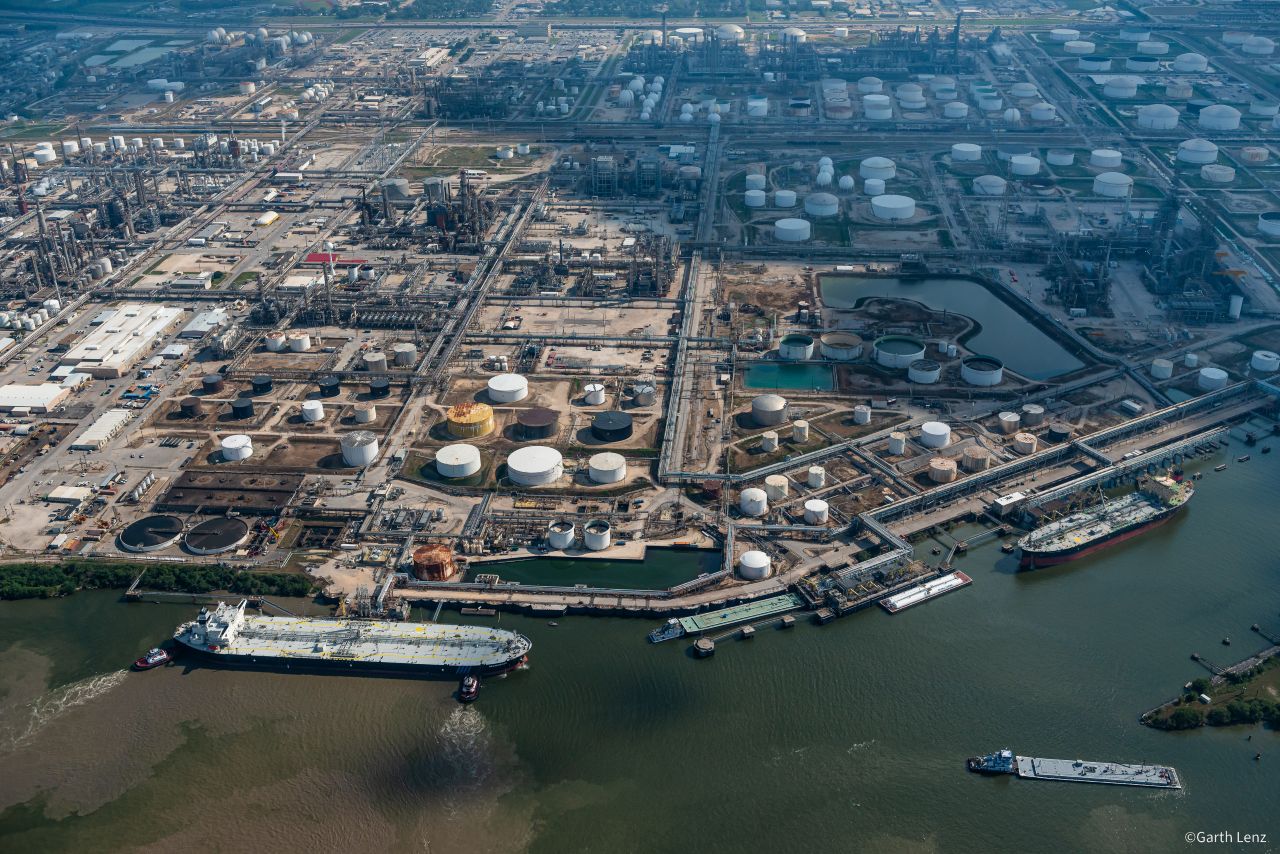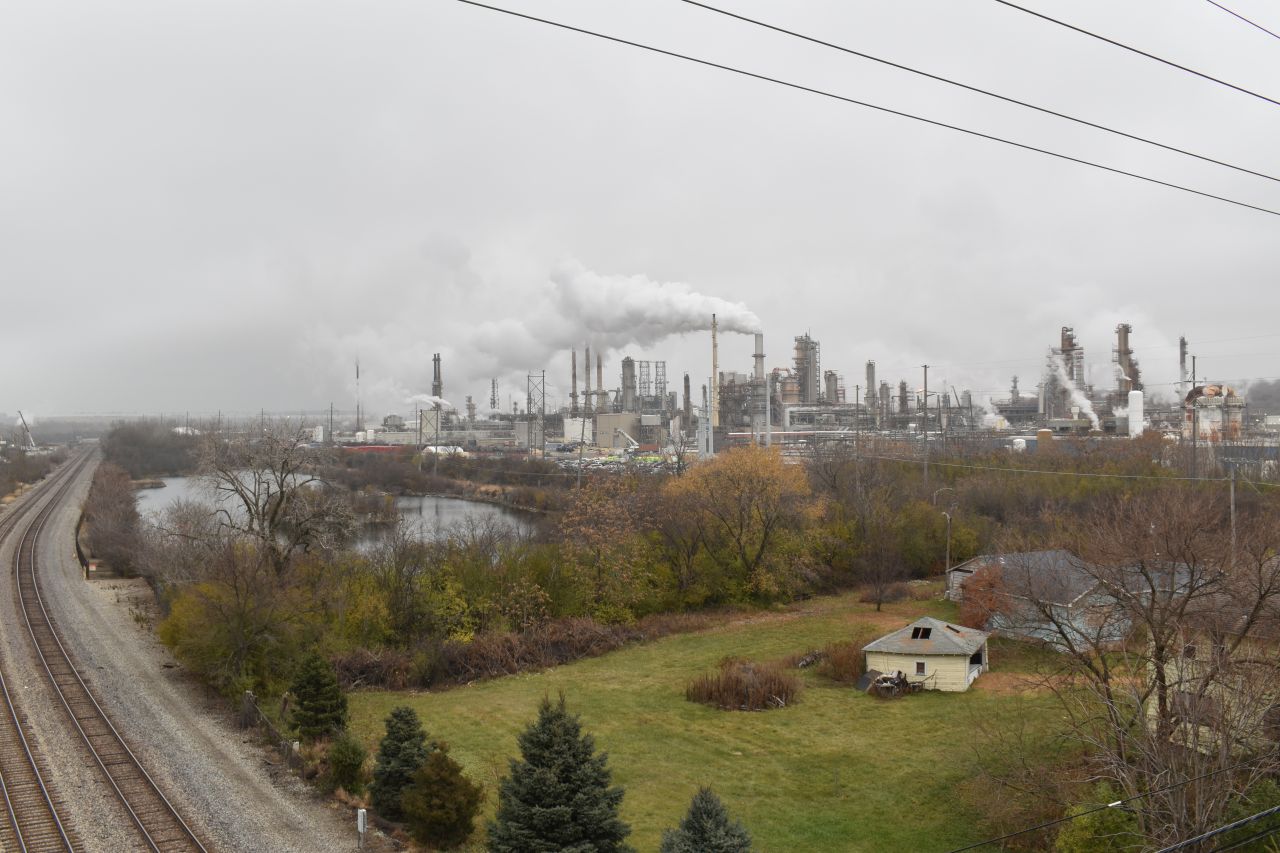World’s largest ammonia complex would make fertilizer from natural gas in West Virginia coalfields

The world’s largest nitrogen fertilizer plant, which would make ammonia out of natural gas, could be headed for a former coal mining site in rural West Virginia.
TransGas Development Systems, a New York-based company, is seeking an air quality permit for a facility in Mingo County with six ammonia manufacturing units capable of producing up to 6,000 metric tons per day – a total of more than 13 million metric tons per year. If built, the Adams Fork Energy facility’s ammonia fertilizer production would eclipse that of CF Industries’ Donaldsonville Nitrogen complex in Louisiana, which CF Industries says is currently the world’s largest ammonia plant and can produce nearly 7.2 million metric tons per year of fertilizer products.
According to permit information in the Oil & Gas Watch database, the Adams Fork plant in West Virginia could each year produce more than 52 tons of nitrogen oxide air pollution and half a ton of volatile organic compounds, both of which contribute to smog. The plant would also release 13 tons per year of carbon monoxide, a poisonous and flammable gas.
The proposed plant is part of a wave of new and expanding fertilizer factories being built across the country. Currently, 30 plants in the U.S. produce ammonia—the main building block of nitrogen-based fertilizers—using natural gas as the primary ingredient. Another nine new ammonia fertilizer plants are proposed, along with three expansions of existing plants, according permit applications and other public records reviewed by the Environmental Integrity Project for its 2023 report, "The Fertilizer Boom.”
Though chemical fertilizer is widely used by farmers to produce corn, soybean, and other food crops, ammonia production facilities come with a heavy environmental toll. The 30 fertilizer plants operating in the U.S. today reported releasing as well as 12,491 tons of ammonia air pollution in 2021, which can contribute to excessive algal blooms and low-oxygen “dead zones” in waterways; and 5,227 tons of sulfur dioxide, which can cause lung disease; as well as 3,981 tons of volatile organic compounds and 16,146 tons of nitrogen oxide air pollution in 2021. The plants also released a cumulative 46.8 million tons of greenhouse gases in 2021, as much as about nine million passenger vehicles driving for a year.
One of the co-developers of the West Virginia plant with TransGas, the Flandreau Santee Sioux Tribe, which has a reservation in South Dakota, said in a news release that the tribe “depends heavily on its agricultural resources” and has been hit hard by soaring costs for ammonia fertilizer, with price shocks related to the global natural gas market and Russia’s war in Ukraine.
“The tribe is hopeful to utilize a substantial portion of the Adams Fork Energy ammonia as fertilizer for its own land and for other United States tribes,” tribal president Anthony Reider said in the release.
During a Feb. 21 virtual meeting held by the West Virginia Department of Environmental Protection, some nearby residents expressed concerns that air pollution from the new facility would pile on additional health problems for residents already struggling with conditions like asthma and chronic obstructive pulmonary disease.
Rev. Brad Davis, a Methodist minister who grew up in Mingo County and serves in a neighboring county, said he has parishioners struggling with lung conditions who have never in their lives worked in coal mines or smoked cigarettes.
“The people of this region have long suffered at the hands of corporations who place profit above the well-being of the people,” Davis said.
The Adams Fork project was at one point billed as an anchor project in the Appalachian Regional Clean Hydrogen Hub (ARCH2), one of seven regional hydrogen fuel production centers chosen to apply for $7 billion in federal funding as part of the Bipartisan Infrastructure Law. To jump-start the U.S. hydrogen economy, the federal government is funding the creation of networks of facilities that produce hydrogen fuel from natural gas or water and renewable electricity. The hubs would include pipelines, storage sites, and other ways to get hydrogen to end-users who could use it to make fertilizer and other chemicals, or power industrial sites and move heavy trucks.
The ARCH2 hub is planned for Ohio, Pennsylvania, and West Virginia – all major natural gas-producing states thanks to prolific production from the Marcellus and Utica shale formations over the past decade and a half. The hub is the only one of the seven selected to proceed with the funding process that would exclusively use methane to synthesize hydrogen instead of relying on renewable or nuclear power – evidence that the ARCH2 hub would not actually be producing clean fuel, but instead a methane byproduct of fossil fuels.
Jim Kotcon, a West Virginia Sierra Club member, told Oil & Gas Watch News that a community liaison from the Department of Energy said during a mid-February call that the Adams Fork Energy ammonia plant is no longer included in plans for the ARCH2 hub.
According to permitting documents, the Adams Fork Ammonia project would produce fertilizer, not hydrogen fuel. The plant would take natural gas and use a technology called autothermal reforming to produce liquid ammonia, “used by customers primarily as fertilizer,” the document states.
A Department of Energy spokesman did not answer questions about the Adams Fork plant or the ARCH2 hub, saying only that the department would “release further details on the projects” once it has decided which projects will get funding.
In December, energy company CNX said it was ending its involvement in the Adam Fork Energy project, which CNX’s CEO once described as “accelerating America’s lower carbon energy and manufacturing future in the heart of Appalachia.” In a news release, the company said it was leaving the project because of “increasing uncertainty” about rules to qualify for tax credits for hydrogen production, as well as an “inability to reach final commercial terms with the project developers.”
TransGas staff did not respond to an emailed request for comment.
Despite the abandonment of the project by CNX, Kotcon, the West Virginia Sierra Club member, said the group is still taking the proposal seriously and has concerns about the air permit proposed for the site. The draft permit, issued by the West Virginia Department of Environmental Protection in December 2023, only covers emissions from the ammonia production equipment and does not factor in emissions from any pipelines that would bring gas to the site, trucks to move gas or liquid ammonia, or equipment used to capture and store carbon dioxide.
“This permit is just not ready, and I urge you to go back to the drawing board,” Kotcon told West Virginia Department of Environmental Protection staff in a Feb. 21 virtual meeting.
During that meeting, some residents of Mingo County expressed support for the project, describing it as a way to revitalize an area devastated by the decline of the coal industry.
“We have all the confidence in the world in (TransGas founder Adam) Victor’s ability to facilitate this project successfully and in compliance with the regulatory guidelines,” said Leasha Johnson, executive director of the Mingo County Redevelopment Authority.
But the record shows that Adam Victor, and his Manhattan-based company TransGas, have questionable track records of success in this area.
TransGas’s current project site in Mingo County was originally meant to be the site of a coal-to-gasoline facility that got an air permit from the state in 2010 but was never built. TransGas had also simultaneously planned two other coal-to-gasoline plants in the coal field of eastern Kentucky, but neither was completed.
TransGas has also pitched building a gas-fired power plant in Brookyln and a coal-to-gas plant in Central New York. Neither were built.















